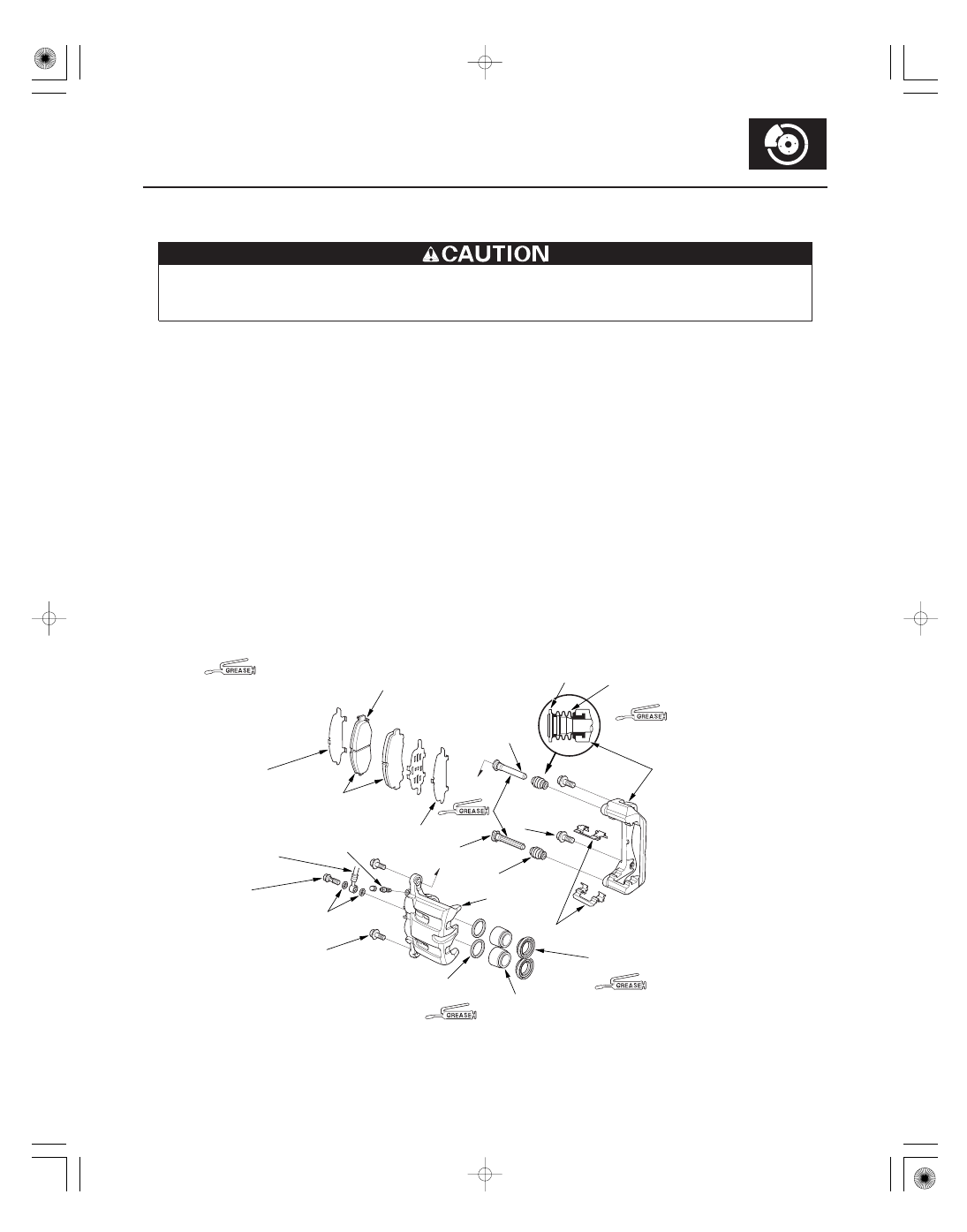Honda Ridgeline. Manual - part 320

01
SJC8A00D14300014711LAAT10
19-17
Front Brake Caliper Overhaul
CALIPER
BRACKET
CALIPER PIN
OUTER PAD SHIM C
WEAR INDICATOR
INNER PAD SHIM A
BRAKE
HOSE
BANJO BOLT
34 N·m
(3.5 kgf·m,
25 lbf·ft)
SEALING WASHERS
10 x 1.25 mm
72 N·m
(7.3 kgf·m, 53 lbf·ft)
BLEED SCREW
10 x 1.0 mm
8 N·m
(0.8 kgf·m, 6 lbf·ft)
LOWER
CALIPER PIN
PAD RETAINERS
PISTON BOOT
PISTON
PISTON SEAL
PIN BOOT
14 x 1.5 mm
137 N·m
(14.0 kgf·m,
101 lbf·ft)
CALIPER
BODY
: Honda silicone grease (P/N 08C30-B0234M)
BRAKE PADS
UPPER
CALIPER PIN
PIN BOOT
Frequent inhalation of brake pad dust, regardless of material composition, could be hazardous to your health.
• Avoid breathing dust particles.
• Never use an air hose or brush to clean brake assemblies. Use an OSHA-approved vacuum cleaner.
Remove, disassemble, inspect, reassemble, and install the caliper, and note these items:
NOTE: Make sure that the caliper pins are installed correctly.
The upper and lower caliper pins are different. If the caliper pins are installed in the wrong location, it will cause
uneven tire wear, vibration, and or uneven or rapid pad wear.
• Do not spill brake fluid on the vehicle; it may damage the paint; if brake fluid gets on the paint, wash it off
immediately with water.
• To prevent dripping brake fluid, cover disconnected hose joints with rags or shop towels.
• Clean all parts in brake fluid and air dry; blow out all passages with compressed air.
• Before reassembling, check that all parts are free of dirt and other foreign particles.
• Replace parts with new ones as specified in the illustration.
• Make sure no dirt or other foreign matter gets in the brake fluid.
• Make sure no grease or oil gets on the brake discs or pads.
• When reusing brake pads, always reinstall them in their original positions to prevent loss of braking efficiency.
• Do not reuse drained brake fluid. Use only clean Honda DOT 3 Brake Fluid from an unopened container. Using a
non-Honda brake fluid can cause corrosion and shorten the life of the system.
• Do not mix different brands of brake fluid as they may not be compatible.
• Coat the pistons, piston seal grooves, and caliper bores with clean brake fluid.
• Replace all rubber parts with new ones whenever disassembled.
• After installing the caliper, check the brake hose and line for leaks, interference, and twisting.
Install inner brake pad with
its wear indicator upward.
Replace.
Replace.
Replace.
Replace.